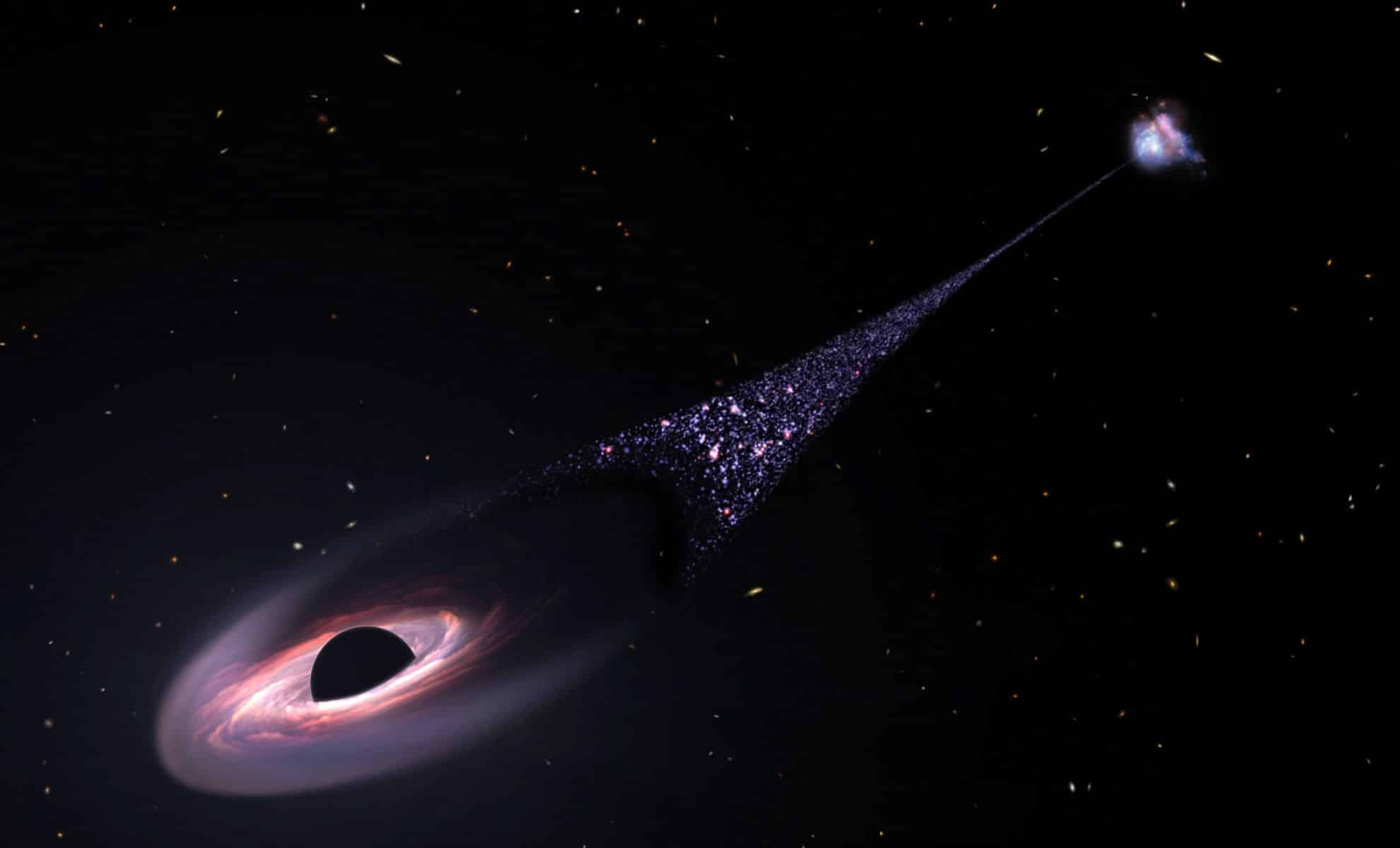
The Milky Way galaxy, our solar system’s home, is a dynamic environment influenced by immense cosmic forces. Recent research has uncovered a thrilling prospect for the future: our galaxy is on a collision course with a supermassive black hole. This massive entity, located within the Large Magellanic Cloud (LMC)—a dwarf galaxy that orbits the Milky Way—has been found to be slowly inching towards a merger with our galaxy. Although this monumental event is billions of years away, it holds the potential to significantly alter our comprehension of black holes and their development. Exciting findings suggest that this collision might provide a rare chance to examine the growth process of black holes, evolving from modest sizes into the colossal, supermassive forms found at the centers of galaxies like ours.
A Revolutionary Finding: Understanding Black Hole Evolution
Leading this groundbreaking study is Jiwon Jesse Han from the Harvard & Smithsonian Center for Astrophysics, who has pinpointed a supermassive black hole nestled in the Large Magellanic Cloud, currently on a trajectory towards the Milky Way. This particular black hole is estimated to have a mass of approximately 600,000 solar masses, making it significantly lighter than the Milky Way’s central black hole, Sagittarius A*, which boasts a mass of around 4.3 million solar masses. The exciting details of this discovery can be found on the preprint server arXiv and have been submitted to The Astrophysical Journal for peer evaluation.
Uncovering this hidden black hole was quite challenging, as black holes do not emit detectable radiation unless they are actively consuming matter. Therefore, the research team employed indirect detection techniques. By examining the movements of hypervelocity stars—stars propelled at exceptionally high speeds beyond normal galactic conditions—the researchers identified gravitational interactions with a massive, unseen object. The Hills mechanism, a process where a black hole interacts with two stars to eject one at hypervelocity, proved instrumental in their discovery.
The Hills Mechanism: Unlocking the Mystery
Black holes are notoriously elusive because they do not produce light or radiation unless they are actively consuming surrounding matter. One of the most effective techniques for astronomers to identify black holes is to analyze the motion of stars nearby. A star exhibiting movement that cannot be accounted for by the gravitational pull of known bodies may indicate the presence of a black hole nearby. The Hills mechanism involves gravitational interactions between a black hole and two stars, leading to the hypervelocity ejection of one star. By tracing the paths of these rapidly moving stars, researchers could backtrack to the Large Magellanic Cloud, identifying the likely involvement of a black hole with a mass around 600,000 solar masses.
This newfound knowledge sheds light on black hole growth dynamics, suggesting these cosmic giants do not necessarily begin as massive objects. Instead, they can evolve over time through interactions with other stars, eventually forming supermassive black holes. This discovery enriches our understanding of black hole evolution, providing valuable data on the transition from stellar-mass objects to the enormous, supermassive entities residing in galactic centers.


A Future Collision in Our Cosmic Journey
The Large Magellanic Cloud, situated about 160,000 light-years away, is currently orbiting the Milky Way. In approximately 2 billion years, this dwarf galaxy will collide with ours. This merging will trigger a sequence of remarkable events, including the eventual convergence of their supermassive black holes. The black hole from the LMC will make its way to the center of our galaxy to merge with Sagittarius A*, resulting in an even more massive black hole. Though this occurrence is eons away, it presents astronomers with a unique chance to observe the intricate dynamics associated with galaxy mergers and black hole growth.
Astrophysicists posit that such interactions are crucial for the expansion of black holes over time. As galaxies intersect and their central black holes combine, they forge increasingly massive black holes. The eventual merger between the Milky Way and the Large Magellanic Cloud could offer a splendid opportunity to observe this process, despite the fact that we won’t live to witness the final result. The identification of the hidden black hole within the LMC paves the way for a deeper understanding of black hole growth, particularly in relation to galaxy mergers.









